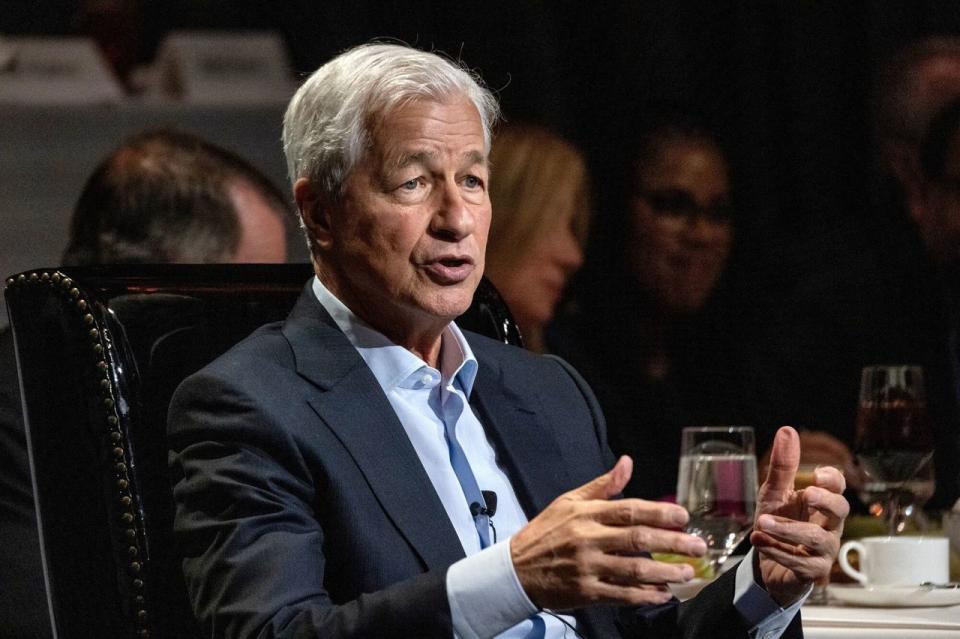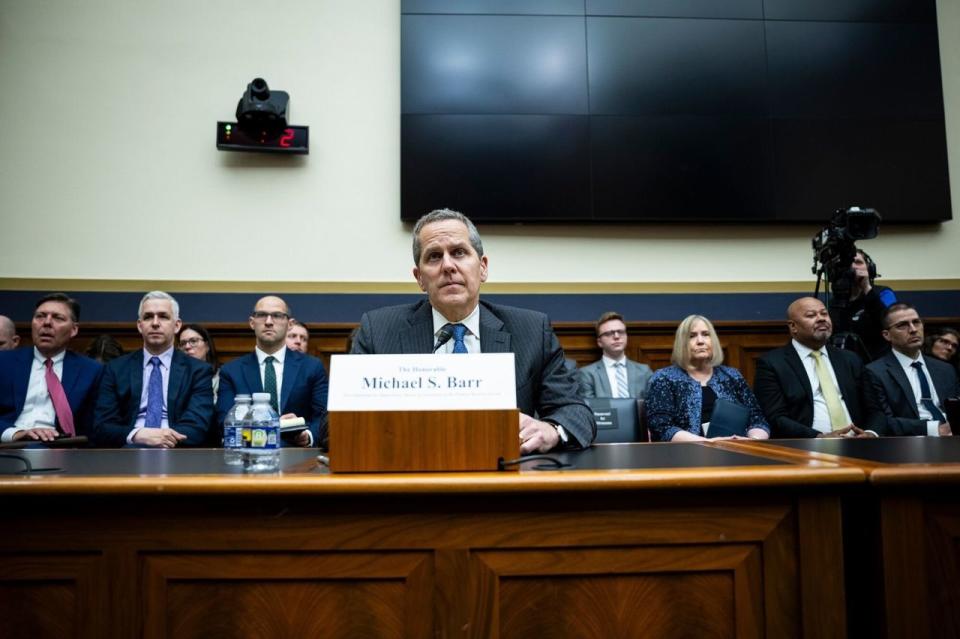Dimon Led Bank CEOs to Fend Off Tougher Capital Rules

WASHINGTON—JPMorgan Chase’s Jamie Dimon and other big-bank CEOs played hardball with the Federal Reserve over proposals that the lenders hold more capital. Now, it looks like those tactics are paying off.
The Fed and two other federal regulators are moving toward a plan that would significantly lessen a nearly 20% mandated increase in capital for the biggest U.S. banks, according to people familiar with the matter.
Most Read from The Wall Street Journal
Required increases in capital for banks like JPMorgan and Goldman Sachs—meant to ensure they have sufficient buffers to absorb potential losses—would on average be about half as much as originally floated.
It would be a big win for the banks and Dimon. Banks say the rules as originally proposed would drive up costs and crimp lending. It also represents a shift in the balance of power between big banks and their regulators, turning the page on an era in which the Fed held the upper hand.
Dimon at a meeting in Washington last fall told his fellow CEOs to bypass Michael Barr, the central bank’s vice chair for banking supervision and the main architect of the original plan. Dimon urged his fellow bankers to instead press other Fed governors, in particular Chair Jerome Powell, to alter the proposed capital rules.
By doing so, the bankers hoped to capitalize on internal disagreement and concern on the seven-member Fed board over the regulatory proposals.
Dimon has characterized Barr’s proposal as “flawed and poorly calibrated” and publicly pushed for other Fed governors to speak out. “What person, in what ivory tower thinks that that is a rational thing to do?” Dimon said at a conference last September. “I’d like to know what the other governors think.”
He also expressed frustration with regulators in general, saying in his annual shareholder letter that banks’ relationships with them “have deteriorated and…are increasingly less constructive.”
Big U.S. bank CEOs met with Powell more than a dozen times between last July and March, according to the central banker’s public calendar. Those included four meetings or calls with Dimon.
On Friday, the Fed released calendars for Barr showing he met 15 times with the CEOs of the largest U.S. banks during the same period. He also met with Dimon in April and in May, a Fed spokesman said.
“I have not felt bereft of attention from the banking lobby,” Barr said in a statement.

Top officials from all three agencies involved in the pending capital rules—the Fed, Federal Deposit Insurance Corp. and the Office of the Comptroller of the Currency—are still negotiating substantive and technical revisions, and there is no guarantee that a deal will come together. It also could be late this year before any plan is ready.
The pending rules are the last in a series of steps global regulators agreed to in the wake of the 2008-09 financial crisis, which are aimed at boosting the resilience of the banking system and guarding against taxpayer-backed bailouts. The latest proposal also seeks to protect against a variety of other risks, including the potential to lose money from cyberattacks.
Its July release kicked off the biggest regulatory fight in at least a decade, featuring fierce lobbying from big banks as well as pushback from a bipartisan chorus of lawmakers and others including affordable-housing advocates. Unlike other fights over financial regulation, the campaign involved a series of pricey television ads during National Football League games warning of dire economic consequences.
Goldman Sachs spent millions on its own advocacy campaign. The Financial Services Forum, which represents the eight largest U.S. banks, also asked its members to chip in $2 million apiece on another ad campaign.
Among those leading the charge was Dimon, who urged bank executives to bypass Barr during a fall board meeting of the Bank Policy Institute, a Washington lobbying group. In addition to Powell, banks have also viewed Philip Jefferson, the Fed’s vice chair, as a key swing vote.
Barr is still in charge of shepherding the plan day-to-day, but is now closely coordinating with Powell, who is playing a more active role.
In March, Powell said that the new rules won’t be finalized without broad and material changes. He also said any plan would have broad support on the board and opened the door to scrapping the existing plan and starting over again with a fresh proposal. The FDIC and OCC are resistant to starting over.
Even if the agencies eventually reach an agreement to finalize the rules this year, the banks could still challenge them in court.
One recent wrinkle in the negotiations revolved around the way banks account for the value of their trading positions and other capital-markets activities. The issue is likely to have an outsize effect on five of the largest Wall Street firms, which besides Goldman and JPMorgan include Morgan Stanley, Bank of America and Citigroup.
Powell and other Fed officials support reducing the amount of capital reserves tied to such activities, relative to the proposed rule. The issue accounts for a significant amount of the overall increase in capital envisioned for the largest banks. Officials at the two other agencies involved in drafting the rules were resistant to watering down market-risk provisions, worried it would undermine a key pillar of the new framework.
If the FDIC and OCC convince the Fed to leave the provisions largely untouched from the proposal, Fed officials have indicated they want to compensate with cuts elsewhere in the plan.
Write to Andrew Ackerman at andrew.ackerman@wsj.com
